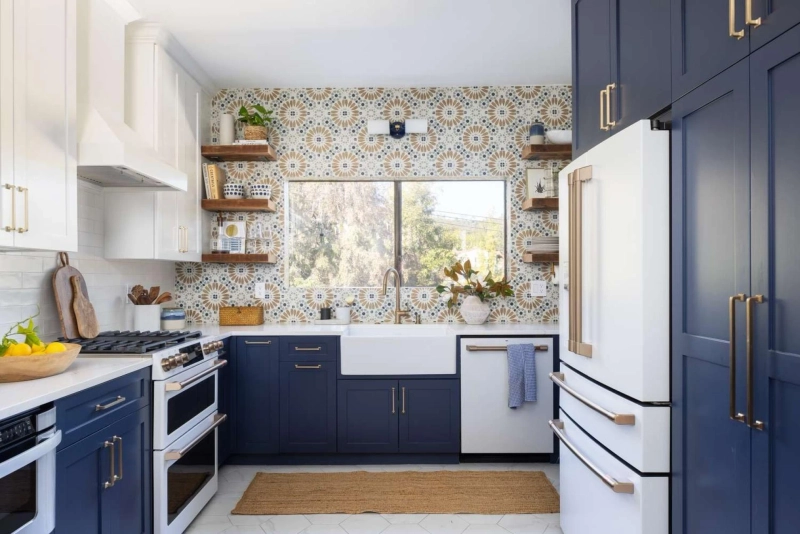When choosing kitchen finishes, color is one of the single most influential decisions you'll make. Color defines mood, affects perceived space, and guides the selection of countertops, backsplashes, flooring, and hardware. Today’s homeowners are moving past traditional whites and wood finishes, opting for colors that add personality without feeling outdated, making blue a stylish and versatile choice.
Specifically, blue kitchen cabinets have become particularly popular for their capacity to read serene yet assertive. Blue cabinets come in delicate, powdery hues that make cozy small areas sparkle or dramatic navy blues that anchor expansive open-plan kitchens. The use of blue as a neutral background or bold statement based on finish, contrast, and combination makes blue kitchen cabinets a strong option for current and enduring styles as well.
Why Blue Works as a Neutral
Blue comes with a wide tonal range and goes well with most materials. Light blues sparkle and open up small kitchens; mid-tones warm without losing subtlety; dark blues are dramatic and contrasting, particularly when combined with light countertops and metallic hardware. Blue's soothing connotations, blue sky, and blue sea make kitchens feel welcoming and balanced, which is why blue is increasingly acting like a neutral in modern color schemes.
Pairing Blue with Materials and Colors
To create the maximum effect, blue kitchen cabinets should be paired with contrasting colors and textures. Lighter marble or quartz countertops provide a sophisticated contrast; open shelving and warm wood flooring introduce natural warmth; brass or matte-black hardware adds a touch of modern luxe. Neutral-colored backsplashes, white subway tile, soft stone, or textured plaster, let the cabinetry's color take center stage without visually competing.
Function and Storage: Make It Work
Functional design takes any color selection to the next level. Considered storage cabinets, pantry design, and pull-out organizers make the daily functionality equal to the style potential of blue kitchen cabinets. Utilize tall storage cabinets to store pantry materials, deep drawers for pans and pots, and designed inserts for utensils; this intelligent planning maintains the kitchen's organization and allows the blue finish to be the focal point, rather than the chaos.
Finishes, Hardware, and Lighting
Finish influences perception: matte paints have a contemporary, velvety feel; satin finishes reflect more light and look slightly more traditional. Hardware options, such as cup pulls, linear bars, or sculptural knobs, move the style from farmhouse to modern. Layered lighting (task, ambient, and accent) is crucial so blue tones read correctly at all times; under-cabinet and interior-cabinet lighting also emphasize the cabinetry's craftsmanship and color.
Layout and Scale Considerations
Blue cabinetry is unexpectedly scale-friendly. In tiny kitchens, try lighter blues or blue on lower cabinets with painted or lighter uppers to maintain an open feel. In big kitchens, try a deep-blue island to ground the space while leaving perimeter cabinets lighter. Blending blue cabinetry with natural wood islands or countertop returns adds warmth and visual depth.
Maintenance and Longevity
Choose long-lasting, high-quality paint and expert-level finishes to minimize wear and fading. Regular cleaning with mild, pH-balanced cleaners and immediate touch-ups maintains painted surfaces in like-new condition. If well planned and well executed, blue kitchen cabinets stay chic for decades, making them a wise investment in style and resale value.
Conclusion
Blue kitchen cabinets have transitioned from a trend to a contemporary neutral, offering flexibility, personality, and lasting style. With proper material mixing, well-considered storage cabinets, and diligent consideration of finishes and lighting, blue can anchor any kitchen aesthetic from coastal and cottage to contemporary and industrial. Blue is a brilliant, effective pick for color with staying power if you desire color with longevity.



